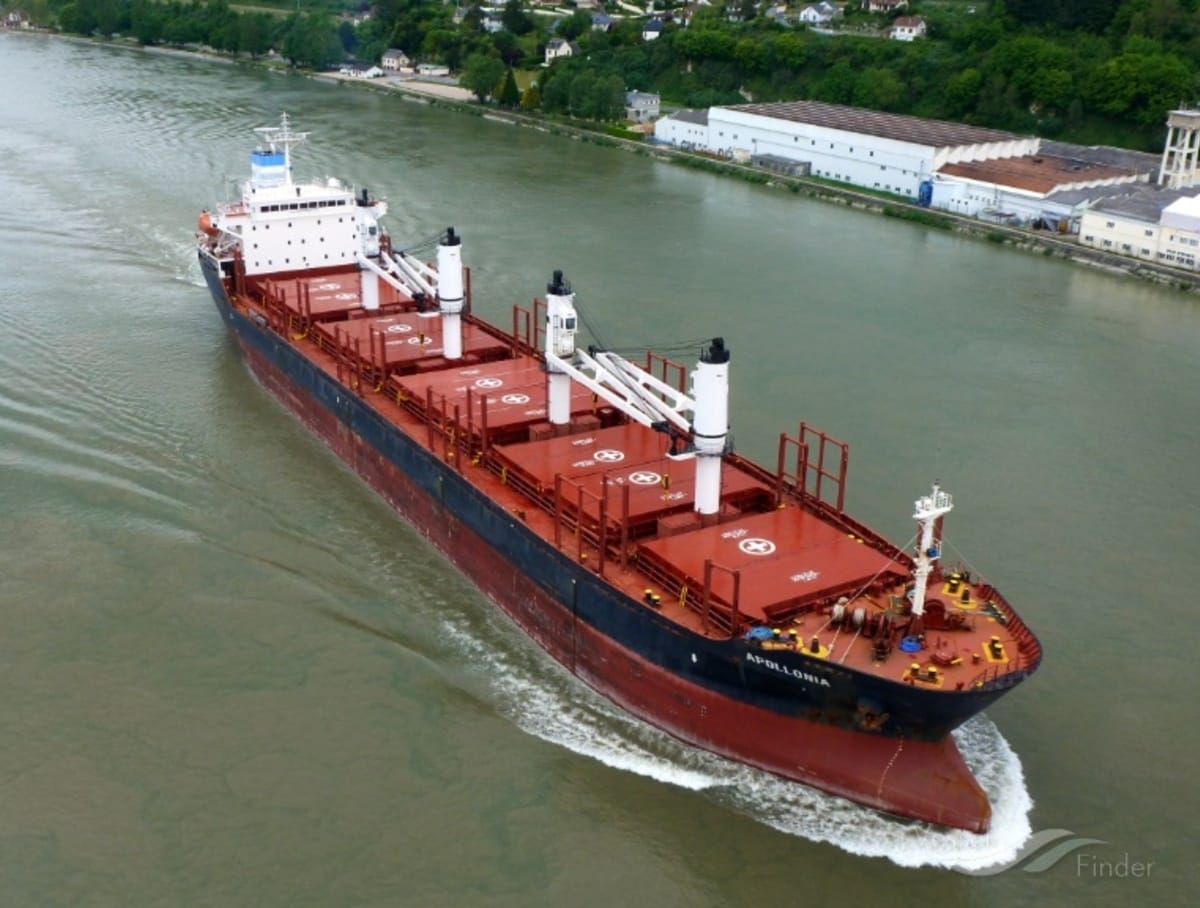On September 7, Vladimir Putin said that EU countries took advantage of the agreement on the export of grain from Ukrainian ports. According to the Russian president, almost all the grain was sent to Europe, although it was intended for the poorest countries. We decided to check how true this is.
Putin speaks about his dissatisfaction with the implementation of the agreement on a humanitarian corridor for the unhindered export of grain stated at the Eastern Economic Forum. According to him, “if we exclude Turkey as an intermediary country, then everything, almost all the grain exported from Ukraine is sent not to developing and poor countries, but to the countries of the European Union.” He clarified that only two ships were loaded under the UN World Food Program. “Many European countries in previous decades and centuries acted as colonialists, and continue to act today. Once again, developing countries have simply been deceived and continue to deceive,” Putin concluded and threatened to “limit the export of grain and other food along this route.” The next day, Putin was also supported by Turkish President Recep Tayyip Erdogan. “Mr. Putin is right that deliveries along the grain corridor are carried out not to poor countries, but mainly to developed ones,” stated Erdogan.
On July 22 in Istanbul, through the mediation of Turkey and in the presence of the UN Secretary General, signed agreement on the export of grain from Ukrainian ports on the Black Sea. After the Russian invasion of Ukraine, grain prices rose, and the UN announced the threat of famine in many countries. Before the war, Ukraine was one of the world's main suppliers of corn, wheat and sunflowers. According to the terms agreements merchant ships are provided with a humanitarian corridor for the unhindered export of grain. The preamble to the agreement states that the purpose of the treaty is to prevent global hunger and reduce the risk of a global food threat.
The basic conditions are as follows: no armed ships can approach the humanitarian corridor; merchant ships can freely export grain and other food from three Ukrainian ports - Chernomorsk, Odessa and Yuzhny. Each vessel is subject to inspection - this is done by the specially created Joint Coordination Center (Joint Coordination Center, JCC). Its tasks include checking dry cargo ships departing for Ukraine and arriving from there with cargo. Each ship is subject to registration, which is monitored by representatives of all agreed countries (Ukraine, Russia and Turkey), as well as the UN.
Almost every day, the coordination center publicly reports on the trade traffic of incoming and outgoing bulk carriers and posts the corresponding press releases. They indicate the name of the vessel, registration number, name of the cargo, volume of cargo, port of loading and port of destination. For clarity, we have combined this data into a single table.
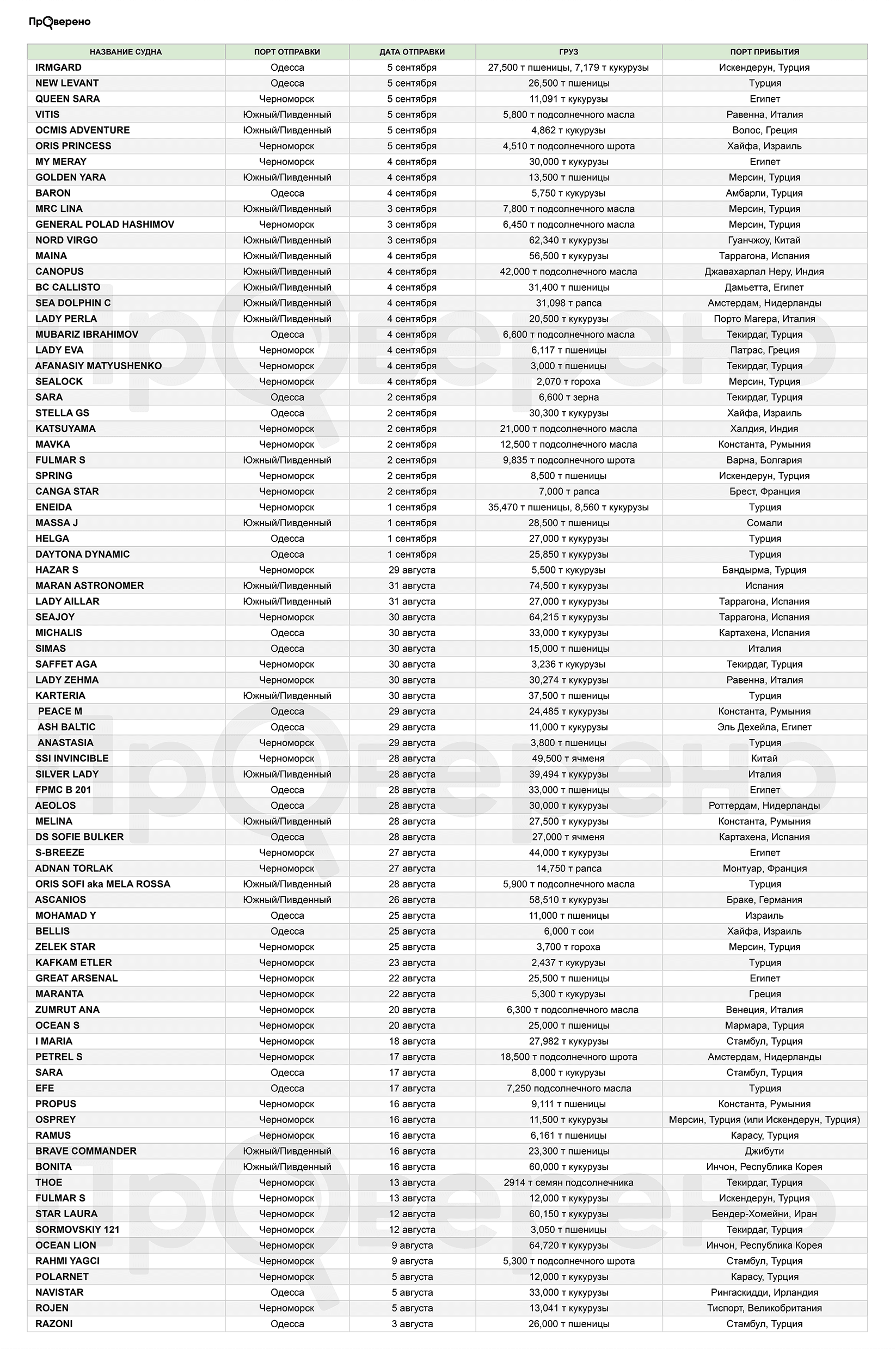
Also, if necessary, you can always clarify the route of a particular vessel on one of the sites that track movements by sea, for example on VesselFinder.
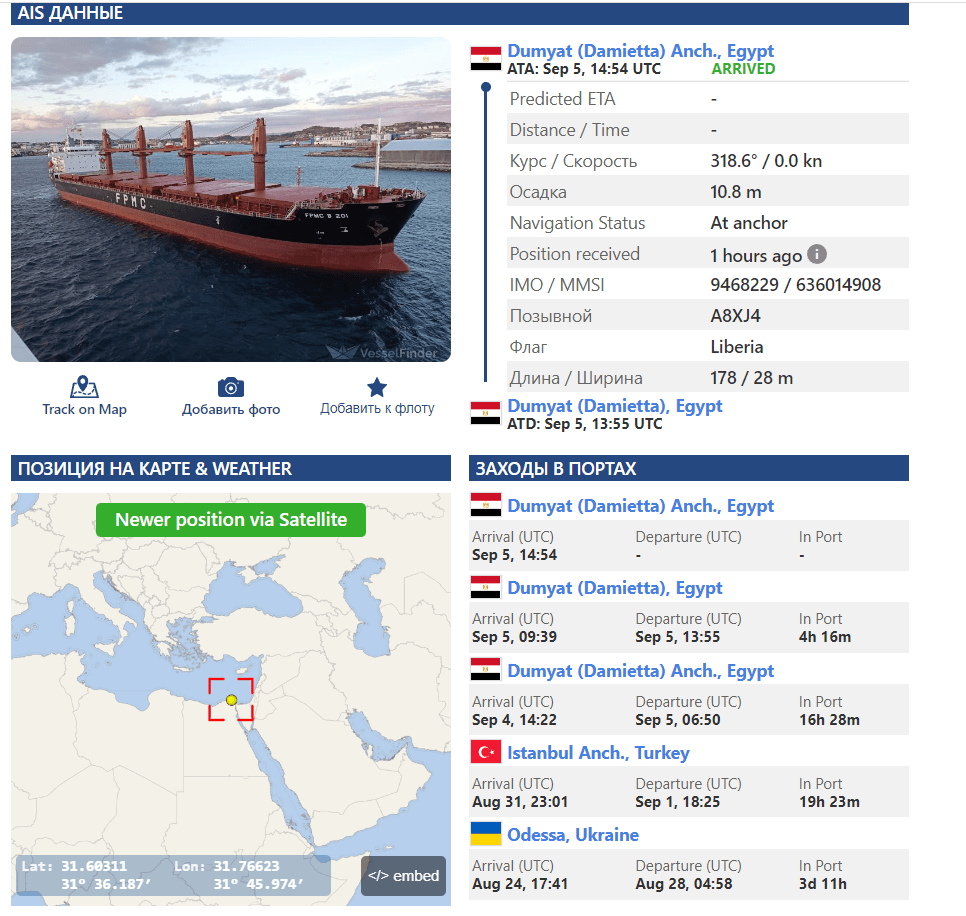
From the table and the explanations of the coordination center it is clear that, in fact, only two merchant ships are carrying cargo within the framework of the UN food program. On August 16, the Brave Commander vessel loaded 23,300 tons of wheat at the Yuzhny port and set sail for Djibouti. The wheat will then be transferred to Ethiopia under a UN program. The second ship is Karteria. Its route is more complicated: from the Yuzhny port it transported 37,500 tons of wheat to Turkey, where the wheat ground, and the flour was sent by another ship to famine-stricken Yemen.
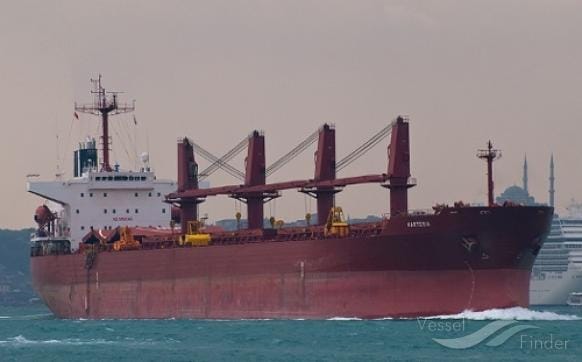
But if we are talking about the poorest countries, then there is a third ship - Massa J, which is carrying 28,500 tons of wheat to Somalia.
If we again turn to the data of the coordination center (available at the time of Putin’s statement), we can determine which countries received the most cargo. 27 ships with various foodstuffs, primarily corn, departed for the European Union; another ship was destined for Great Britain. Most of the dry cargo ships were sent to the ports of Italy and Spain (six each), followed by Romania (four), Greece and the Netherlands (three each), France (two), Germany, Bulgaria and Ireland (one each). But a significant amount of cargo was also sent to other countries - 18. Seven ships loaded food for Egypt, four for Israel, two each for China, India and South Korea, and finally, one goes to the Iranian port. However, the most cargo went to Turkey - 32 merchant ships, that is, more than to all EU countries combined. Thus, Putin’s words that almost all the grain is sent to the countries of the European Union (remember his reservation regarding Turkey’s mediation) do not correspond to reality.
The answer to the question why grain is not immediately sent to countries facing the threat of famine is in statement the focal point itself. “Exporting to any country will help calm markets and limit food inflation,” assures the structure, which has delegates from Russia, Ukraine and Turkey. The official representative of the European Commission, Eric Mamer, also spoke about this earlier. August 5th at the next briefing he explained that deliveries of Ukrainian grain to the EU reduce pressure on markets and free up additional volumes on the world market for shipment to Africa. In addition, Mamer noted: “The European Union does not export grain to Europe, we make it easier for traders to export grain, and then they themselves decide what its destination will be.”
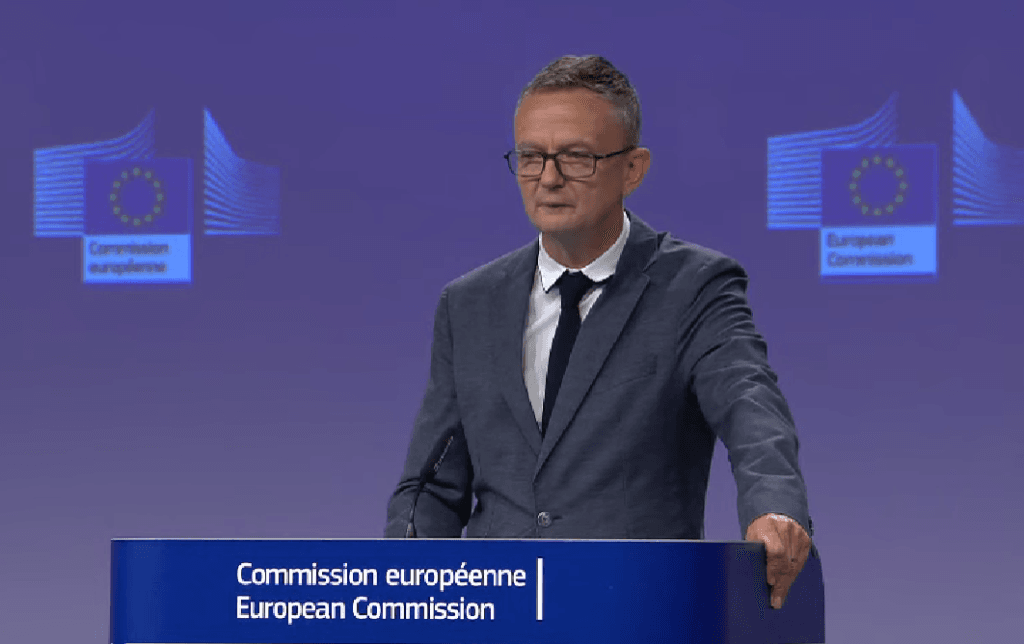
Based on the available data, we can conclude that part of the food cargo was indeed sent to the EU countries. But the statement that “almost all the grain” exported through the humanitarian sea corridor from Ukrainian ports went to Europe is not true.
Cover image: VesselFinder
Mostly not true
If you find a spelling or grammatical error, please let us know by highlighting the error text and clicking Ctrl+Enter.


